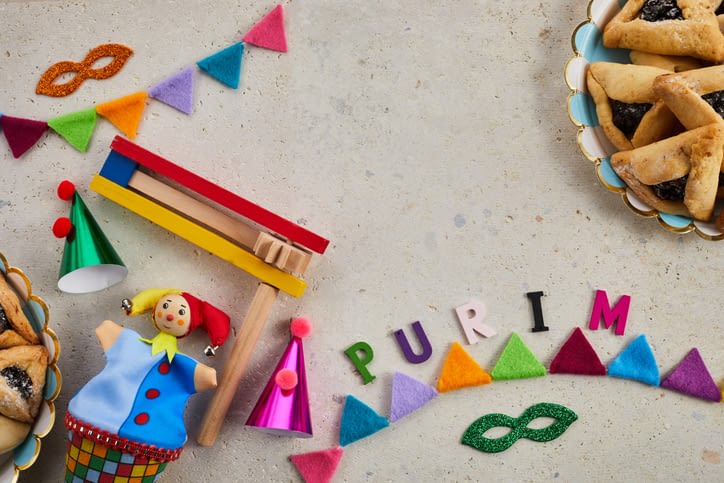I can be a very forgetful person. My multiple calendars and lists are my lifeline, and even then some appointments and responsibilities accidentally fall through the cracks. This is not something I’m proud of and I see it as a failing of mine. The Lord also sees it as a shortcoming and has made a provision for my forgetfulness. And for yours too. Our good God is all about helping us remember the important things!
In Scripture, we see the Lord use objects as a way of helping His people remember His goodness, might, and faithfulness in keeping His promises. The bow he placed in the sky in Noah’s presence was a sign of the covenant, or promise, He made that “the waters [would] never again become a flood to destroy all flesh” (Gen. 9:15). The Lord also commanded that twelve memorial stones be brought out of the dry bed of the overflowing Jordan River as the ark and all the Israelites made their way along the path He made for them. In addition to those twelve stones on the bank of the river, Joshua also stacked twelve stones in the river bed itself (Josh. 4).
We also see elsewhere in Scripture the Lord use holidays to help His people remember. In Leviticus 23, we see God institute seven feasts of remembrance or festivals for His people to observe, with each one highlighting a specific event in their past. The Feast of Passover reminded the Israelites of the saving blood of the lamb on their door lintels. The Feast of Unleavened Bread lasted for a week after Passover and reminded the Israelites of the haste in which they left Egypt. The Feast of Firstfruits was celebrated at the beginning of the grain harvest and acknowledged God’s deliverance of His people out of Egypt and into the promised land, a land that was fertile and rich. The Feast of Weeks (or Harvest) took place fifty days after the Feast of Firstfruits and as a culmination of the harvest season was a way for God’s people to show gratitude to the Benefactor of the bounty. The Feast of Trumpets marked the end of the agricultural and festival year and heralded the coming of the next feast occurring in ten days’ time. The Day of Atonement saw the high priest entering the holy of holies to make an offering for the sins of the whole nation of Israel. Finally, the Feast of Tabernacles (or Booths) took place five days after the Day of Atonement when offerings were presented to the Lord while the people lived in temporary tents or huts to symbolize the Israelites’ journey through the wilderness.
While these were Old Testament observances decreed by the Lord for the benefit of His forgetful people, in each feast there are New Testament applications and I would encourage you to do some research on how Christ can be seen in each one.
But there is one feast which is an outlier, the only feast in our canonized Scripture that was given outside of Leviticus—the Feast of Purim which will be celebrated this year from March 23 to the 24.
Purim, a Jewish holiday of remembrance, historically was commanded to be “days of feasting and gladness, days for sending gifts of food to one another and gifts to the poor” (Est. 9:22). Today, Jews who observe Purim start by reading the entirety of the book of Esther aloud congregationally, give charitably to those in need, share food with a friend, and dine on a festive meal. Children’s participation is encouraged with costumes (harkening to Esther’s concealment of her heritage) and booing Haman, the villain of the story, with every mention of his name during the reading of Esther.

So what’s so special about the book of Esther that would warrant the Lord wanting His people to remember and celebrate it every year?
To answer that, we’ll need to have a quick history lesson.
The story of Esther is placed around 483 to 473 BC during the Persian rule of Ahasuerus (Xerxes I). The events of the book of Daniel have already occurred with the southern tribe of Judah being exiled into Babylon which is then conquered by Cyrus, the Persian king. Cyrus allows the Jews to return to their homeland of Jerusalem. As the story of Esther unfolds, Mordecai is a Jewish man raising his orphaned cousin, Esther, as his own daughter in the Persian capital city of Susa. King Ahasuerus is shopping for a new wife as he disposed of his previous bride after she displeased him. Esther is chosen as a possible candidate and after the contenders are paraded through the palace, the king selects Esther to be his new queen, ignorant of her Jewish heritage as she has not disclosed it to anyone on Mordecai’s advice.
Enter Haman, the king’s right-hand man who was to be honored and bowed to by all according to the king. Except Mordecai didn’t bow and “Haman was filled with fury” (Est. 3:5). Mordecai, who must have held a position of respect as he was often in proximity to the palace, discloses to the king’s servants who are at the king’s gate that he is a Jew. The servants tell Haman and he sets out to not only destroy Mordecai but his entire race of people, which would have included those in Jerusalem as it was still under the jurisdiction of the king of Persia. Haman hatched a plan but was unsure of when to set it in motion so he cast lots, or pur, to let “fate” decide the right time (it’s unknown what the lots actually were but it would be akin to us flipping a coin). Once the lots fell in a way that seemed favorable, Haman mentioned to King Ahasuerus that there was a people scattered throughout his kingdom who were only causing issues and were of no benefit to the king or his purposes. Haman then offered to personally fund the genocide of these people and the king agreed to his trusted advisor’s plan. When the proclamation went out, the citizens of all the king’s provinces were instructed “to annihilate all Jews, young and old, women and children…and to plunder their goods” (Est. 3:13) on the thirteenth of the month. All of the Jews were deeply grieved and fasted and put on sackcloth and ashes in response. Queen Esther learned of this development and after asking for the Jews in Susa to pray and fast for three days, she vowed to approach the king even though approaching without being first summoned was against the law, punishable by death.
Esther hosts two dinners for her husband and Haman, and before the second one occurs, it is brought to King Ahasuerus’ attention that he never honored Mordecai for thwarting an assassination plot. The king brings in Haman to ask him how he could recognize a deserving man. Haman, thinking the king is speaking of celebrating him, suggests pulling out the stops: a parade for the gentleman sitting atop a royal horse, enrobed in a royal garment. You can imagine Haman’s reaction when he learns it is his archrival who will receive such celebration, and even more than that, Haman is the one who dresses Mordecai and leads his horse through the city, proclaiming, “Thus shall it be done to the man whom the king delights to honor” (Est. 6:11).
At the second dinner Esther hosts, she unveils Haman’s plot against the Jews as well as her Jewish heritage to her husband, the king. Esther had found favor with King Ahasuerus and, outraged, he took action. Haman was hanged on the very gallows he had built for Mordecai. Then because the king’s original decree couldn’t be reversed, a second decree went out to say that the king would allow the Jews to defend themselves and take the attackers’ goods should anyone seek them harm. Thus, Queen Esther’s bravery and Mordecai’s integrity saved the Jewish people from genocide.
We should remember, as we regard Purim, that our great and magnificent Lord has plans that cannot be foiled. Haman was an example of the worst kind of evil, someone who out of his hatred for one wanted to destroy all. But he has a history that’s hard to see at first blush. The Bible’s introduction of him is as “Haman the Agagite” (Est. 3:1). That’s an important note. Agag was king of the Amaleks, who the Lord commanded Saul to destroy in 1 Samuel 15 for an offense the Amalekites subjected God’s people to in Numbers 14. Saul did not obey the Lord and as a result, his kingship was eventually stripped from him. So Agag lived when the Lord instructed him to die. Saul’s disobedience bore the ugliest, most rotten fruit many, many years later in the form of Haman, a descendent of Agag who was bent on the destruction of every single Jew. Had Saul obeyed in killing Agag, would we even have the story of Esther?
But God steps in to rescue and save His people again. And again. And again. Throughout the metanarrative of the Bible. Throughout all the stories of individual lives. We can easily paint Esther and Mordecai as the saviors of this story, especially when the book itself never mentions the name of the Lord. And while they certainly play a heroic part in this epic tale, the Lord points our attention to Himself. The feast is called Purim, so named after the lots Haman cast. Whose mighty hand was behind those lots? The Lord commanded Aaron to cast lots over goats (Lev. 16:8), to divide land by lots (Josh. 18:6), and to divide labor responsibilities by lots (1 Chron. 25:8), just to name a few examples. We have the indwelling of the Holy Spirit now so there is no need for us to use this method to discern the Lord’s will as they used it in the Old Testament. The message is clear: fate has no place in a believer’s life.
The salvation the Lord keeps reminding us of with the objects and the feasts is a temporary, earthly one. But there is a permanent, eternal saving available to us through Jesus Christ, our ultimate Savior, that we must not miss, must not be absentminded about.
So I would encourage you to celebrate Purim. Be thoughtful about giving to someone in need, share some food with friends, and feast! Put on a costume and boo Haman. But read the book of Esther. Every year. Remember. Recall. Recollect that our God sent His Son to save us from annihilation. And He does this for us every day of our lives until eternity.
Other Blogs to Read:
- Building Faith like Strong Women of the Bible
- “Be a Friend”
- Christian Gratitude: It’s Our Choice to Make

Dana Carrington loves Jesus and words. A southern transplant now living in the national capital region, she reads travel guides for fun and has an extensive song lyric database in her brain which comes in handy for games of Name that Tune on road trips. She understands fruitcake’s bad rap is well-deserved, but is willing to bet her family’s recipe will change hearts and minds. Her husband and four kiddos are her greatest delight.
